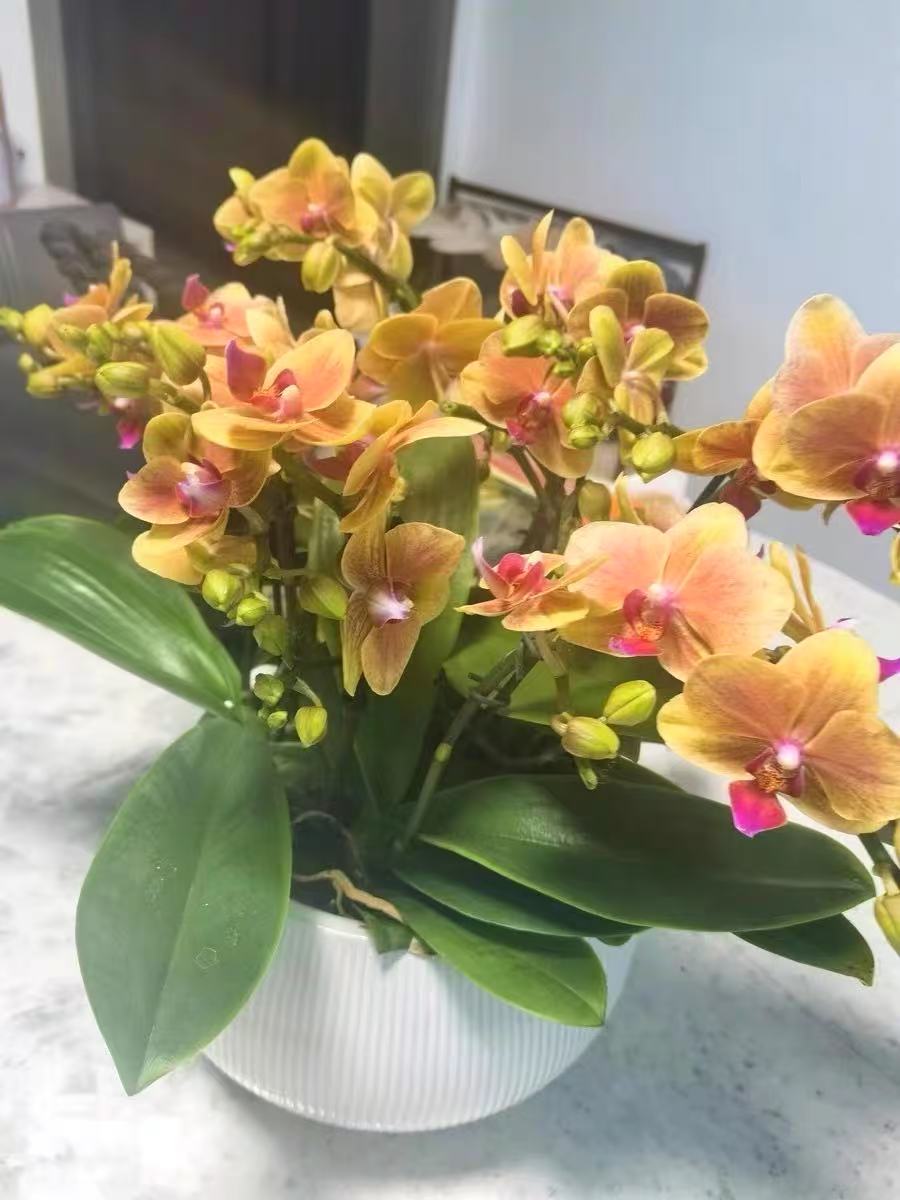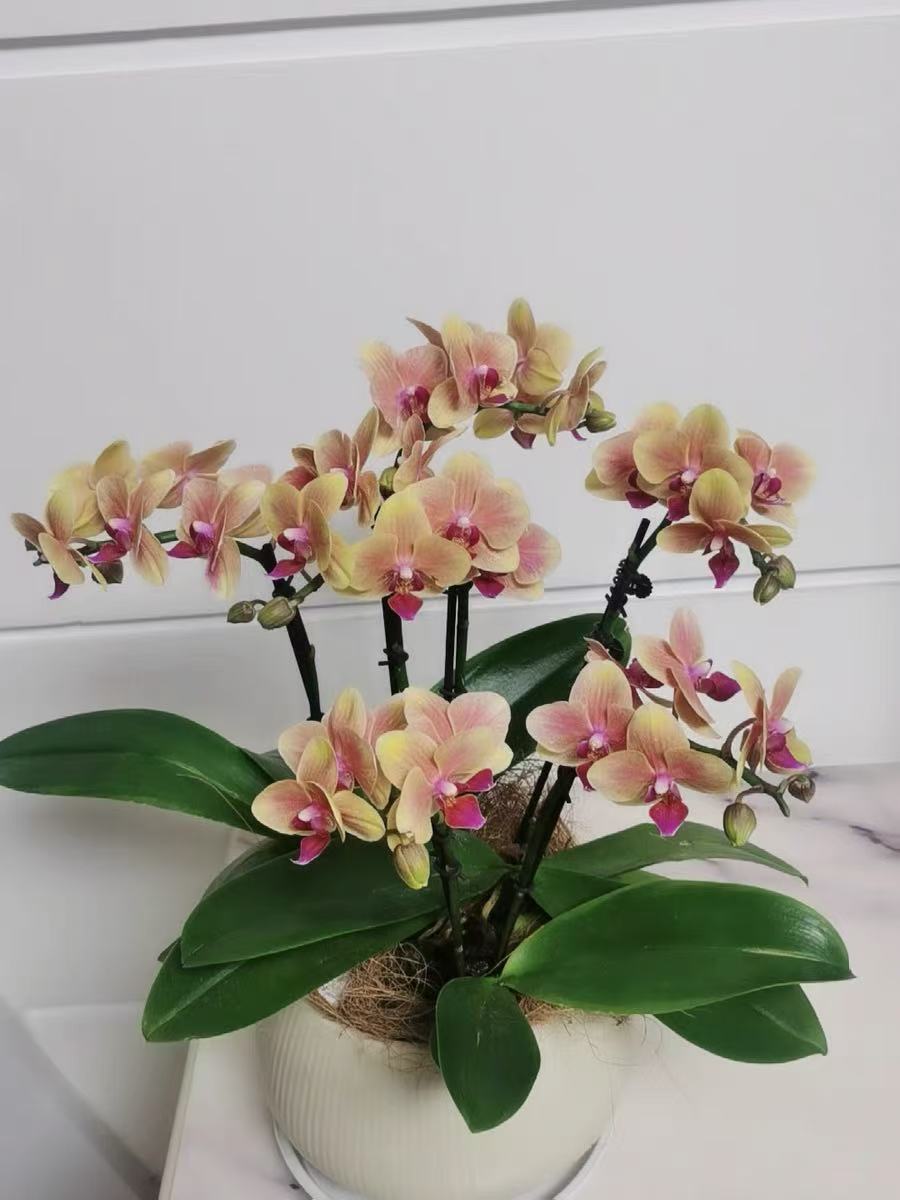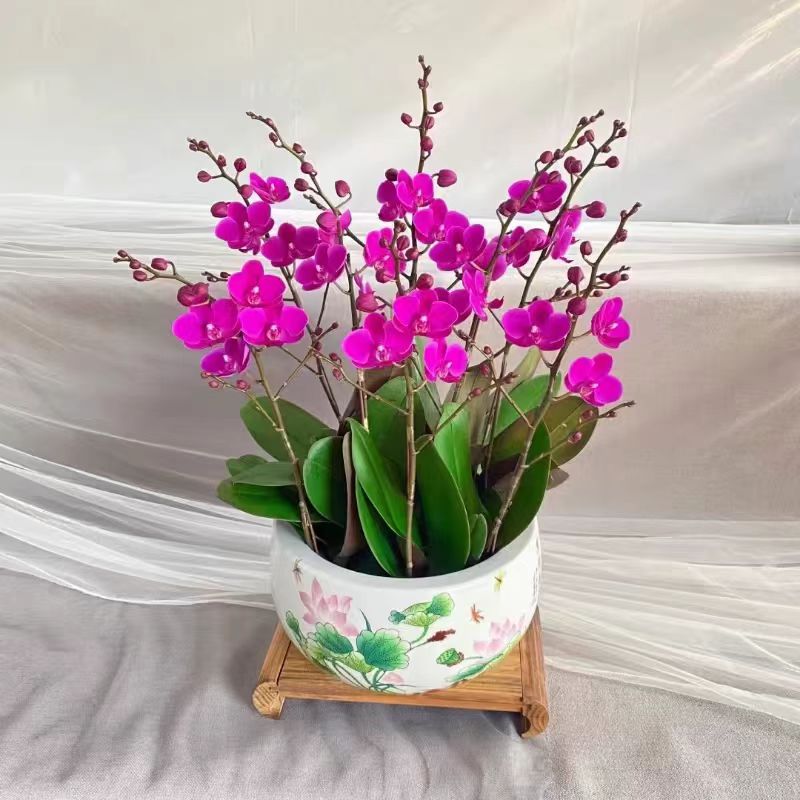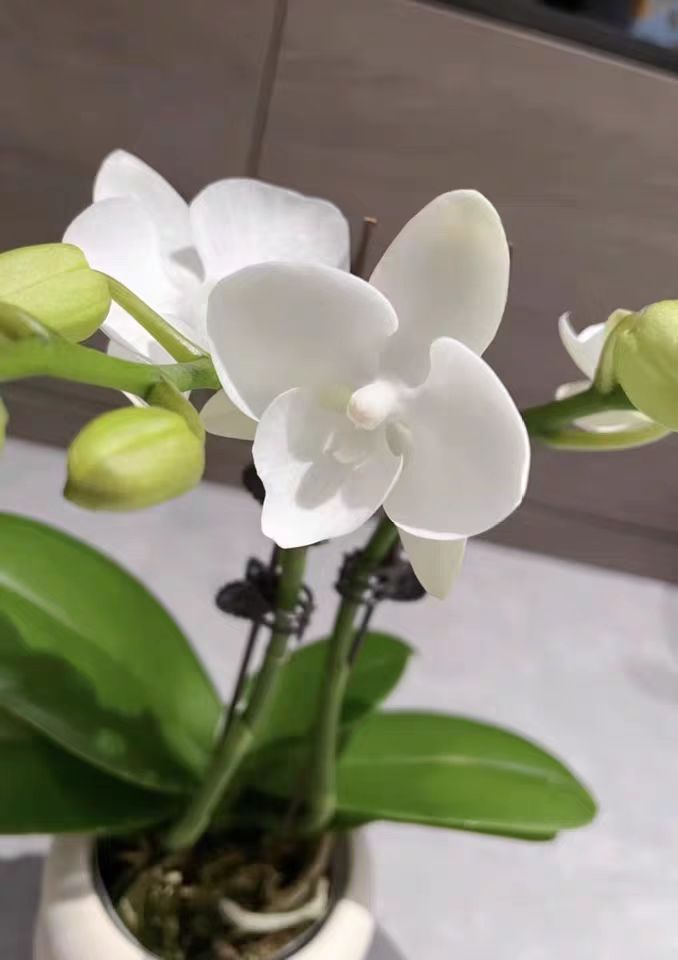Phalaenopsis, as an indoor ornamental plant, is highly favored for its elegant posture and gorgeous flowers. However, for many growers, how to water it correctly is a thorny problem. So, should Phalaenopsis be watered thoroughly?
Observe the humidity of the potting soil: Phalaenopsis prefers a humid growing environment, but it doesn't mean it should be soaked in water for a long time. Before watering, be sure to carefully observe the humidity of the potting soil. If the surface of the potting soil is dry while the inside still has some humidity, this is the best time to water. By gently inserting your finger into the potting soil to feel its humidity, you can more accurately determine whether watering is needed.
Water in moderation: When watering Phalaenopsis, the principle of "moderation is best" should be grasped. Usually, let the water slowly flow out from the bottom of the pot to ensure that the potting soil absorbs water fully. However, excessive watering should be avoided to prevent root rot caused by waterlogging. When watering, the watering method can be used. Slowly pour water from above the flower pot and put it back in place after the water flows out from the drainage hole at the bottom. This can not only allow Phalaenopsis to absorb sufficient water but also avoid excessive humidity.
Watering frequency: The watering frequency of Phalaenopsis is not fixed but is affected by many factors such as season, temperature, and humidity. In warm seasons, due to the accelerated growth rate of Phalaenopsis, the demand for water will also increase correspondingly. Therefore, it can be watered once every 2-3 days. In cold seasons, due to the slowdown in growth and the decrease in water demand, it can be watered once every 5-7 days. But remember, these time intervals are for reference only, and the actual watering frequency should be adjusted flexibly according to the humidity of the potting soil and the growth status of Phalaenopsis.
If you accidentally water too much, causing the roots of Phalaenopsis to be soaked in water, it may trigger serious problems such as root rot. At this time, remedial measures should be taken promptly to avoid damage to the plants.
Stop watering: Once you find that you have watered too much, stop watering immediately and observe the condition of the plant. If the soil is already too wet, you can consider taking out the plant and pouring out the excess water.
Strengthen ventilation: Moving the Phalaenopsis to a well-ventilated place, such as a windowsill or outdoors, will help the water evaporate quickly. At the same time, maintaining proper air circulation can also reduce the breeding of pests and diseases.
Remove the pot and air the roots: If the situation of excessive watering is more serious, you can gently take the Phalaenopsis out of the flower pot. Be careful to be gentle to avoid damaging the roots. Then, expose the roots to the air and dry them in a ventilated and cool place. This process requires patience, and do not rush to replant it in the flower pot.
Improve drainage conditions: When planting Phalaenopsis, you can choose media with good air permeability, such as perlite, decomposed pine needles, and leaf mold. At the same time, set drainage holes at the bottom of the pot to ensure that excess water can drain smoothly and avoid waterlogging.
Adjust the fertilization amount: Excessive watering may lead to a decrease in the nutrient absorption capacity of Phalaenopsis. Therefore, the amount of fertilization can be appropriately reduced to allow the plant to gradually adapt to the new environment. At the same time, choose some fertilizers rich in potassium to enhance the disease resistance and adaptability of the plant.
When caring for Phalaenopsis, watering is a crucial part. It is necessary to ensure that the plant receives sufficient water and avoid problems such as root rot caused by overwatering. By mastering the correct watering method and remedial measures, Phalaenopsis can grow healthily and vigorously.
Should Phalaenopsis be watered thoroughly?

Share with
Tagged in :




Leave a Reply